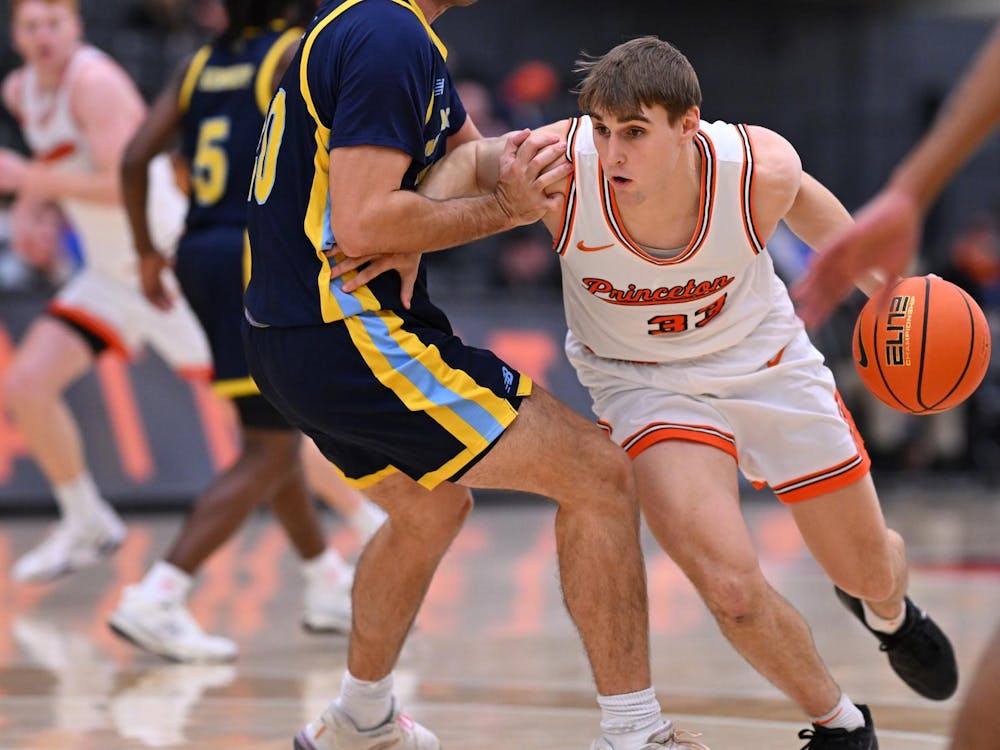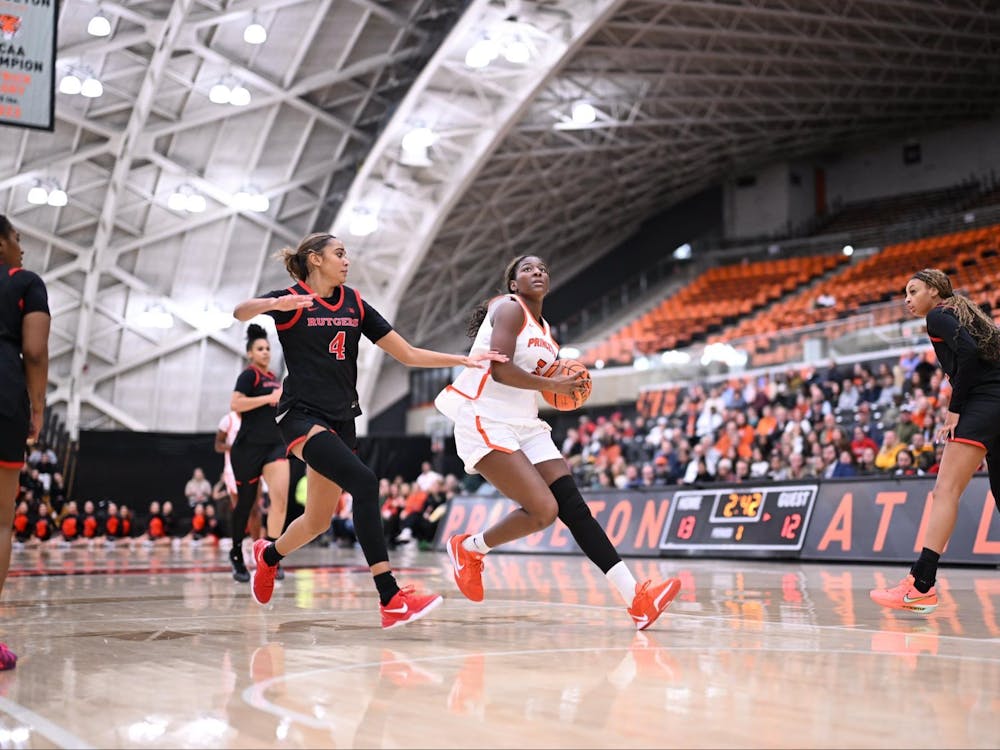Two important lines are painted on each half of Carril Court, just like every other basketball court in the world. One is short and straight, 15 feet from the backboard, hidden within a half-circle; the other curves away from the baseline and back again, containing all sorts of other shapes inside a 20.75-foot rainbow. And it is at those two lines — the free-throw stripe and the three-point arc — where Friday’s Princeton-Harvard showdown will be decided.
The last time Harvard won at Jadwin Gymnasium was in February of 1989, a 63-57 victory over a Princeton team that went on to win the Ivy League (and nearly pulled off the first 16-seed-over-1-seed upset ever). The last time the Tigers lost at home to Harvard by double digits was four years before that, a 60-50 loss in January of 1985 — before the NCAA had implemented a three-point line. Surely neither of this year’s teams would like to turn the clock that far back, as both are among the nation’s best three-point shooting teams: Princeton ranks fifth nationally at 40.8 percent against Division I opponents; Harvard is eighth at 40.1 percent.
The Tigers’ long-range prowess has been a surprise, to say the least. In 14 non-conference games, Princeton hit 34.1 percent of its triples, right around the national average. But in Ivy League play, the Tigers have sunk 66 of 130 three-point attempts — an unheard of 50.8 percent rate. The next best team in any conference is Weber State, more than seven percentage points behind (43.5 percent against the rest of the Big Sky).
No player is more representative of Princeton’s shooting surge than sophomore forward Denton Koon. For one-and-a-half seasons, Koon was never an outside shooter; he took only three triples as a freshman and nine in the first 13 games of this season. But since the start of Ivy League play, Koon’s basically been playing Pop-A-Shot from 21 feet away, hitting 12 of 18 three-pointers (66.7 percent) in nine games so far.
He’s had plenty of help, as six Tigers have taken at least 20 three-pointers this season, and five of them are shooting better than average. After a slow start to the season, junior point guard T.J. Bray has rediscovered his sophomore-year shooting form, hitting 18 of 36 treys in league play, including six in a stellar showing against Penn. The same goes for senior center Mack Darrow, who has settled into his part-time role and is now shooting 39 percent in Ivy games. Junior forward Will Barrett has ripped nets all year long: His 52-percent full-season mark leads the conference. Even senior forward Ian Hummer, for whom three-point shooting is roughly his 30th-best skill, has hit half of his threes in Ivy play, albeit on six attempts.
Harvard has fewer three-point threats, but the Crimson makes up for it in volume. Siyani Chambers, Laurent Rivard and Christian Webster have combined to take 93 percent of Harvard’s outside shots — Rivard alone launches nearly seven treys a game — and each is at or near the 40 percent mark for the season. Against Princeton two weeks ago, that trio combined to hit seven three-pointers to the Tigers’ four, making most of the difference in a 69-57 game.
But the Tigers will have a weapon to counter Harvard’s bombers: one of the nation’s best three-point defenses. Princeton excels not so much by forcing opponents to miss a lot of outside shots — something that may not even be possible, according to recent research — but by not allowing three-point attempts at all. Only 27 percent of its opponents’ shots this season have come from behind the arc, compared to a national average of 33 percent, and that’s not a one-year fluke: Princeton has been in the nation’s top 30 of that category for each of the last five seasons.
Harvard launched 18 threes against the Tigers at Lavietes, tied for the second-most Princeton has allowed this season. But with several tall defenders quick enough to switch and close out on perimeter shooters, Princeton should keep that number lower on Friday.

The other line to watch this weekend is the charity stripe. The key factor may not be how well each team shoots free throws — Harvard is making 72 percent, while Princeton is at 71 percent — but how many they take in the first place. Five of the Crimson’s seven rotation players draw at least one foul per 10 minutes, led by Wes Saunders, who can earn free throws seemingly at will. Down the stretch of a tight game at Yale on Saturday, Harvard drew shooting fouls on three consecutive possessions, making five of six freebies to keep the Bulldogs at bay.
All told, Harvard draws roughly one free throw for every two field goals, the second-best free throw rate in the nation; only Villanova gets to the line more frequently. Princeton’s ratio, on the other hand, is about one to three, slightly below the Division I average; besides Hummer, few Tigers can consistently get to the line.
Of course, in one game, those season-long advantages don’t always matter. Going into the 2011 playoff, Harvard ranked second nationally in free throw percentage; in what was expected to be a close game, many thought foul shooting could be the difference. Those predictions were right — and, at the same time, they were dead wrong. Harvard made just 10 of 16 free throws, clanking three in the final six minutes, while Princeton was a nearly perfect 14-for-15, putting itself in position to win on the final shot.
If the Tigers neutralize Harvard from both lines this weekend, they should hold home court for a 24th straight season. More importantly, they would draw even with the Crimson in the loss column with two weeks to play — getting in position for another potential Princeton-Harvard tiebreaker.








